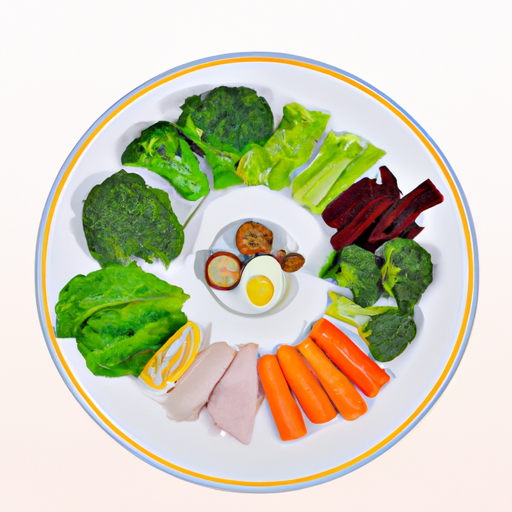The Benefits of a Low Glycemic Index Diet
Hey folks, I’m here to tell ya all about the low-glycemic index diet. It’s a meal plan designed to help you regulate your blood sugar and encourage weight loss — something everyone can get behind. But before we dive in too deep, let’s start by briefly defining this diet.
A low-glycemic index (GI) diet focuses on choosing foods that have a low GI score. Foods with a low GI are digested more slowly, and therefore don’t cause a rapid spike in your blood sugar levels. These types of foods include whole grains, legumes, nuts and seeds, fruits, and vegetables. On the flip side, foods with a high GI are typically full of simple carbohydrates, like white bread and sugary snacks—which will quickly raise your blood sugar.
Now that we know what it is and why it works, let’s take a deeper look into the benefits of adhering to a low-GI lifestyle.
Benefits of Low-Glycemic Index Diet
If you’re looking to make some changes in your nutrition, a low-glycemic index diet could be just what the doctor ordered. This way of eating has plenty of benefits for those looking to improve their overall health, lose weight, and manage their blood sugar levels.
First off, this type of diet helps you keep your blood sugars in check, reducing long-term risks like diabetes. This is especially important if you already have diabetes or are at risk of developing it due to genetics or lifestyle factors. By choosing and eating more low-glycemic foods, you can significantly reduce your chances of developing any complications.

Another big benefit of this diet is that it can help you shed extra pounds, and keep them away. By avoiding high-glycemic foods, you’re not getting empty calories that don’t fulfill hunger and lead to overeating. Instead, you’ll find yourself fuller longer, but without the bloat that comes with processed snacks and meals.
Finally, this type of diet can also reduce your risk of heart disease. Low-glycemic foods tend to be higher in nutrients and lower in saturated fats and refined sugars, which can significantly decrease your chance of developing cardiovascular issues.
How to Follow a Low-Glycemic Index Diet
If you’re looking to make a switch to a low-glycemic index diet, I’ve got some advice on how to make the transition a cinch. Firstly, it’s important to understand what qualifies as a ‘low-GI’ food, and then learning the basics of how to make healthier choices that keep your blood sugar in check.
When it comes to choosing foods with a lower glycemic index, think fresh, unprocessed and nutrient-rich. Veggies, lean proteins, nuts, seeds, whole grains and legumes are all great options for keeping your sugars stable. And don’t forget about healthy fats like olive oil and avocado – they’ll also come in handy! All these foods provide sustained energy, making it easier to maintain a steadier glucose level throughout the day.
On the other hand, you’ll want to stay away from high-GI chow. That means avoiding sugary snacks and drinks, pastries, white rice and sugary fruits. Also, if you’re eating processed foods, take a look at the nutrition label. Anything with added sugars should be avoided.
Lastly, monitoring your glucose levels is key. This will help you stay on track, identify any potential trigger foods and assess whether or not your current diet is working. Additionally, tracking your blood glucose can act as a motivator to stay on a healthy lifestyle path.
Potential Risks of Low-Glycemic Diets
It’s no secret that low-glycemic diets can be beneficial in controlling blood sugar and encouraging weight loss. But there is such a thing as too much of a good thing, and there are potential risks to watch out for when you adopt this eating style.
First off, you should be aware that calorie-conscious diets like the low-GI diet may leave you missing out on essential nutrients. If you cut back on carbs, you could end up limiting your intake of some important vitamins and minerals. Stick to nutrient dense foods like leafy greens, fruits, lean proteins and whole grains to make sure your body is getting everything it needs.
Another thing to look out for is loading up on fiber. Foods that are high in fiber – while generally healthy – can sometimes cause bloating, cramping or diarrhea if you overdo it. Make sure to add fiber gradually and drink plenty of water to prevent any GI distress.
With a little common sense and smart food choices though, you can ensure your low-glycemic diet keeps you healthy and well-nourished. So go ahead and enjoy the benefits of a low-sugar lifestyle – just watch out for those potential pitfalls.
Conclusion
Well, I think it’s safe to say that a low-glycemic index diet is the way to go! I mean, not only does it help with blood sugar control and weight loss, but it can also reduce your risk of heart disease. So if you want to take better care of yourself, then this is definitely one option to consider.
That being said, it’s still important to take certain things into account. For starters, you need to make sure you’re getting all the essential nutrients from other sources. It’s also possible to eat too much fiber, so remember to monitor your intake. All in all though, following a low-glycemic index diet isn’t rocket science: just choose low-glycemic foods and avoid high-glycemic ones, and you should be just fine.
Low GI Diet FAQs
What does low-glycemic index do?
When you eat a low glycemic index diet, you are basically eating foods that don’t cause a rapid spike in your blood sugar levels. This kind of diet keeps your blood sugar levels consistent and stable, which helps your body better manage its energy stores. The glycemic index is a measure of how quickly a food will raise your blood sugar levels. Low glycemic index foods, like fruits, vegetables, whole grains, and legumes, take longer to break down and are digested more slowly. This can help you feel fuller, longer and may help with weight management. Eating low glycemic index foods also has other health benefits, such as reducing your risk of developing type 2 diabetes and reducing blood pressure. Eating a variety of low glycemic index foods can also provide your body with essential nutrients like vitamins, minerals, and fiber. So, all in all, eating a low glycemic index diet can be beneficial for your health and can help you stay energized, maintain a healthy weight, and reduce your risk of developing chronic diseases.
What are the disadvantages of low GI diet?
When it comes to dieting, a low glycemic index diet can be a great way to keep your blood sugar in check. But there are some potential disadvantages to consider. First, if you’re trying to shed pounds, it can be hard to stick to this style of eating since low GI foods are often higher in carbohydrates and calories than other foods. Additionally, it may be difficult to sustain this type of eating long-term as it can be quite restrictive. On the flip side, replacing high GI foods with lower GI items can help reduce inflammation and the risk of certain diseases.
Another downside is that it can be difficult to focus on micronutrients, like iron and vitamins, because processed and sugary foods are often low GI. This could lead to nutrient deficiencies, fatigue, and other health problems. Plus, following a low GI diet means you have to be constantly aware of the glycemic index of the foods you’re eating. That can be exhausting and may lead to overthinking meal choices.
Despite these benefits, there are some potential drawbacks that come with a low GI diet. Without careful planning and tracking, you could find yourself consuming too little fiber and other essential nutrients. And if you’re looking for something to help you lose weight, this type of diet may not be the best choice as it can be difficult to maintain long-term.
What are the benefits of low-glycemic index food?
Having a low glycemic index diet can be a powerful tool for promoting weight loss, better management of diabetes, and better overall health. Eating foods that score low on the glycemic index helps to keep blood sugar levels more stable and reduces the risk of diabetes-related complications, such as heart disease and stroke. Low-glycemic foods also help keep hunger at bay and provide a steady supply of energy throughout the day.
Low-GI foods contain plenty of fiber and protein, which help to slow down digestion, making them a better choice for weight loss. Eating these types of foods also helps to reduce cravings for sugary and fatty items, which tend to be high-glycemic. Foods that have a low glycemic index are typically rich in vitamins, minerals, and antioxidants, which can help promote overall health and wellness.
The most important thing to remember when trying to achieve a low-GI diet is to focus on whole, unprocessed foods. Whole grains, vegetables, legumes, nuts, and seeds are all good choices. It’s also important to limit or avoid processed foods, such as white bread and sugary snacks like cookies and candy, which tend to be high-GI. Finally, be sure to stay hydrated and get plenty of exercise, as both are important for optimal health.






